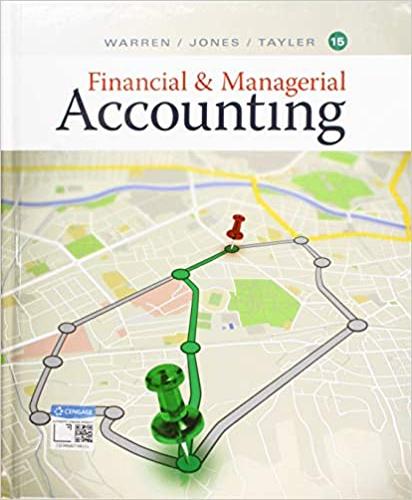6. What is the primary goal of accounting? A. To set long-term goals and objectives. B. To arrange for the necessary resources to achieve a plan. C. To provide information for decision making. D. To motivate employees to work towards a plan's success. 7. Manufacturing overhead was estimated to be $250,000 for the year along with 20,000 direct labor hours. Actual manufacturing overhead was $225.000, and actual direct labor hours were 19.000. Which of the following would be correct? A. Overhead is underapplied by $25,000 B. Overhead is underapplied by $12,500 C. Overhead is overapplied by $12.500 D. Overhead is overapplied by $25.000 8. When disposed of. overapplied manufacturing overhead will A. increase Cost of Goods Sold. B. increase Finished Goods. C. decrease Cost of Goods Sold. D. decrease Finished Goods. 9. Washington, Inc. produces two different products (Product C and Product 2) using two different activities: Machining, which uses machine hours as an activity driver, and Inspection, which uses number of batches as an activity driver. The cost of Machining is $750,000, while the cost of Inspection is $90,000. Usage of the activity drivers are as follows: Product Product 2 Total Machine hours 1,000 3,000 4,000 Number of batches 45 15 60 What is the activity rate for Inspection? A. $45,000 per batch B. $1,500 per batch C. $6,000 per batch D. $2,000 per batch 10. When units are sold, the cost associated with the units is transferred (or debited to) which account? A. Raw Materials Inventory B. Work in Process Inventory C. Cost of Goods Sold D. Finished Goods Inventory 11. To reconcile the number of physical units using the weighted average method of process costing, one must determine whether the units ended up A. completed or still in process at the end of the period. B. sold or still in inventory at the end of the period C. in the next production process or sold at the end of the period D. using direct materials or conversion costs at the end of the period. 12. Prevention costs are costs that A. are incurred to prevent quality problems from occurring in the first place. B. are incurred to identify defective products before products are shipped to the customer C result from defects that are caught before the product is shipped to the customer D. occur when a defective product makes its way into the hands of the customer







